
by Catalina Chacon, Sue Egersdorff, Barbara Bullard, and Jack Davies
Four Salzburg Global Fellows reflect on the power of listening to ourselves and each other
 Photo Credit: “Emotional Detector” 15”x15” mixed media on Masonite by Al Johnson © 2016
Photo Credit: “Emotional Detector” 15”x15” mixed media on Masonite by Al Johnson © 2016
-
Four Fellows reflect on the multifaceted nature of hope, emphasizing its role as a force for resilience and action, yet acknowledging the risks of false hope and despair.
-
They propose using creative arts to facilitate open conversations about hope, creating safe spaces for individuals to express and explore their feelings through sensory experiences.
-
Educators have the power and obligation to create spaces for hope, and these Fellows plan to design a resource for practitioners to engage in conversations about hope, particularly for marginalized individuals and groups.
This op-ed was written by Catalina Chacon, Sue Egersdorff, Barbara Bullard, and Jack Davies, all of whom attended the Salzburg Global Center for Education Transformation program "Civic and Civil Education: Identity, Belonging and Education in the 21st Century" from November 14 to 19, 2023.
This is a story of four travelers who came together to find hope.
Cata works with the Sirenitas in Nicaragua, a group of playful, powerful girls approaching teenage-hood, taking on the challenges of life, and learning how to surf together.
Sue is a fierce UK advocate for connecting young people with older people through a range of meaningful invitations and opportunities. She tells us that loneliness is one of the largest global public health challenges, with an increasing number of people of all ages saying they feel lonely often or always.
Barbara has fought for civil rights in the US since she was 12. She is a creative entrepreneur and leads the Shirley Chisholm Cultural Institute in celebration of the achievements and challenges of the first black woman ever to be elected to US Congress and the first black person with delegates to run for President of the United States of America.
And Jack, a former play and youth worker, is now a senior manager with the World’s Largest Lesson, a non-profit working in partnership with UNICEF, UNESCO, and educators around the world to help children imagine change and take action for the Global Goals.
Hope is a dirty word
We began by talking and sharing. This took us into deep waters and reflective spaces. What actually is this thing we all call hope? Does it matter and if so, why and how? What are “high hopes”? Is hope another word for willpower? Can hope be a bad thing?
It led us to consider the complexity of the construct. Hope could be construed as a double-edged sword. It can be a force for good - for resilience, imagination, and action. But there is also false hope - mistaken or manipulated hope - a promise that will never be fulfilled, or aspirational stories that mislead and create ripples of hope in the mind. And when hope fails, we’re left with heavy feelings that can be challenging to cope with and travel through. At worst, there is the darkness of despair.
Hope can come even in such times of crisis, but a lack of hope is a crisis in itself faced by many, particularly the most marginalized, victimized, and invisible in our societies.
To be, or not to be - that is the question:
Whether ‘tis nobler in the mind to suffer
The slings and arrows of outrageous fortune,
Or to take arms against a sea of troubles
And by opposing end them.
- Hamlet Act 3: Scene 1, William Shakespeare
Hope is multifaceted. It is something different for Cata’s surfing girls, for Sue’s care home residents, and for Barbara’s activists. To us too, as four individuals sitting around the table together. We agreed it cannot be described as a concrete, fixed thing but a charged, dynamic, ever-shifting concept - shaping and reshaping around relationships, environments, and circumstances, and set in past, present, and future living.
Is hope, therefore, a teachable concept or a lived experience? Where does knowledge about hope actually come from? When we talk about it, are we working from an assumption that we share a common understanding, or is this assumption fundamentally throwing us off track? How can we organize understanding when hope is something so personal, intimate, and sometimes deeply and sensitively aligned with how we see and present ourselves to the outside world?
We decided it was a time for courage and trust! We each shared insights from our own lives. Cata spoke about having one person who she is able to be truly open, honest, and vulnerable with.
Jack spoke about a listening group for men, where they can share what’s on their minds and be heard and understood.
We reflected on how rare these safe and intimate relational spaces can be. We discussed the interlinking closeness of hope, empathy, and altruism, and identified some shared values:
- Honesty, openness, and vulnerability - understanding yourself and yourself in relation to others
- Listening and understanding - feeling connected to each other
- Imagination, dreaming, creativity, and playfulness - thinking beyond where we are now, to what could be
Then Barbara shared an authored book “Release and Become” of meditations on hope, inspired by the abstract art of Al Johnson. She told us what hope is to her.
“I end up in my internal space
I end up in an actual space to do the work
I hold the space for others to do their work.”
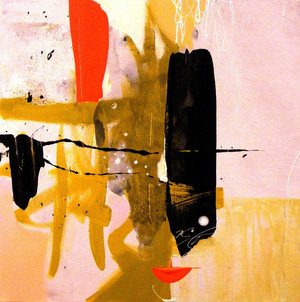
"Emotion Detector" by artist Al Johnson
And then the illuminating moment came. What if we used the creative arts as a vehicle to hold these spaces safely and support the idea of understanding hope as a multi-sensory construct engaging all of our human senses?
To open up safe conversations about hope, using art as the gateway, seemed hopeful in itself! Not telling but asking, not directing but curating, not demanding but inviting, not narrowing down but opening up!
Honest sharing, active listening, quiet understanding, silence, stutters, and false starts were all part of the process as we explored hope as a lost and found thing, a give-and-take thing, a living and dying thing, a light and dark thing. The thoughts and words fell from us as we used artworks to guide thinking and expression.
What does this image, color, or shape make you feel? Why? Can you relate the image to your feelings, emotions, or life? Is it hopeful for you? Does it help to guide your hopefulness? What are your dreams for the future? Can you see your goals in the image? What are your fears - are there reminders of these fears in the image? Where and when do you feel most hope or despair? What surrounds you in these intimate moments?
We shared our ideas with the wider group and invited them to share their own reflections. In just a few minutes we had a rich variety of responses:
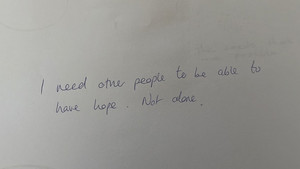

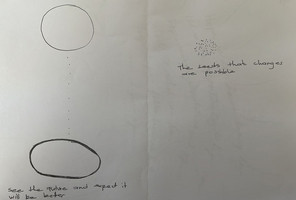
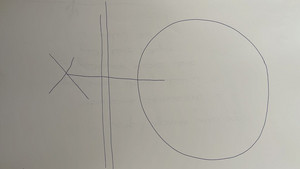
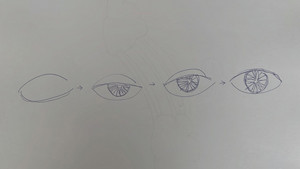
So what did we learn?
Hope is ubiquitous, fluid, and adaptive. It can be many things shaped around the personal, the expressive, and the living. Hope is not a curriculum. Hope can be described as the soil of the soul. It offers the rich, nurturing place from which personal growth, agency, community, and citizenship can shape themselves and ultimately flourish.
It does not allow itself to be easily defined or seated in rigid, linear frameworks and progression-based lesson plans and curricula. It has a connecting strength that, when used well, is permissive and enabling and without which, the rest can’t grow.
Our learning led us to a deeper understanding of hope in times of crisis and the choices that are available to us to find transformative solutions, even in the worst situations, through hopeful thinking and narratives.
Hope is a space, within us and between us, which we can nurture and cultivate to allow the conditions to emerge for authentic human flourishing. This involves negotiations around the value of time and concepts of slowness and slow pedagogies that:
- Create and hold space.
- Allow for deep inquiry.
- Advocate for honesty, openness, and vulnerability.
- Ask not tell.
- Listen to understand.
- Talk with, not to or at.
- Share silence comfortably.
- Create an economy around care.
Hope is the thing with feathers
That perches in the soul
And sings the tune without the words
And never stops at all.
- Emily Dickinson, 1891
As educators, we have the power and the obligation to create and hold space for hope. To move this work forward, our working group is designing an open resource for practitioners to engage in these conversations, particularly for the most marginalized individuals and groups within our global societies. This will be based on five favorable factors we drew from our time together:
- Reciprocity
- Communication
- Dignity
- Co-operation
- Creativity
Cooperation and partnership are the only route that offers any hope of a better future for all humanity.
- Kofi Annan, 2001
Thank you to Dominic and the Salzburg Global Education team for holding our space and allowing us time to explore these understandings together.
The Salzburg Global Fellows who contributed to this article attended the Salzburg Global Center for Education Transformation program on “Civic and Civil Education: Identity, Belonging and Education in the 21st Century”. Along with other Fellows from educational spaces worldwide, they gathered at Schloss Leopoldskron from November 14 to 19, 2023, to rethink the role that education can play in tackling issues like declining democracy, misinformation, and polarization, by considering how to support citizens with skills and behaviors to live harmoniously.
“Civic and Civil Education: Identity, Belonging and Education in the 21st Century” is part of the Education for Tomorrow’s World series, which informs new approaches to learning, skills, and inclusion for radically different societies.